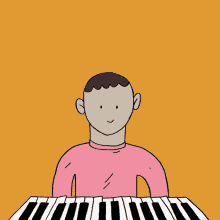DistroKid Review: Your Music Unleashed 🎆✨
DistroKid Review: Your Music Unleashed 🎆✨provides readers with an overview of the distribution services at a well-known service. I must add that I use this platform and rate it highly✨ for ease of distribution and support services. With the advent of distribution services like DistroKid, music creators can forget the days of begging record labels to hear their masterpiece. In the streaming era, DistroKid stands as a beacon of independence for music creators like yourself.
Buckle up, music creators, as we dive deep into this review of DistroKid, exploring its pros, cons, and benefits.
DistroKid is the easiest way to get your music online.
Unlimited uploads, keep 100% of your earnings, and more features than any other music distributor
Pros of Distrokid:
- Low-cost yearly fees: The fees are pretty reasonable in my opinion and members can distribute unlimited uploads for the cost.
- Distrokid offers multiple plans that you will love: These range from single artists ($22.95/year) to label plans for up to 100 artists.
- Ability to form your own label: beginning with one to five artists or bands on your portfolio. This is a wonderful opportunity to distribute for others and to make a name in the industry.
- Unlimited Uploads: Freedom reigns supreme! Release singles, albums, even live bootlegs - DistroKid handles it all, without charging per upload. This is a game-changer for prolific creators like yourself.
- Keep 100% of Your Royalties: No sneaky deductions here. Distrokid collects your royalties and pays them out in the backend - just supply the payment information. Additionally, you can payout to copyright holders using their built in feature.
- Global Reach: Your music deserves a global stage. DistroKid blasts it to over 180 stores and streaming services, from Spotify and Apple Music to TikTok and beyond. Imagine your music reaching fans in Japan!
- Seamless Distribution: Uploading is a breeze, thanks to their user-friendly interface. No tech exertions are required, just drag and drop your music and album cover, then fill in the details, and let DistroKid do the rest.
- Detailed Analytics: Data nerds rejoice! Track your streams, sales, and earnings in real-time with DistroKid's comprehensive analytics dashboard. Know exactly where your music resonates and tailor your strategy accordingly.
- Bonus Features: Distrokid provides a suite of FREE bonuses like Distrolock to protect your music from unauthorized downloads.
- Optional Add-Ons: DistroKid goes the extra mile with optional add-ons like music mixing, music video distribution, cover song licensing, and even YouTube Content ID. Think of it as a music creator's swiss army knife!
Cons:
- Limited Marketing Tools: While DistroKid provides basic marketing features, it doesn't offer the in-depth promotional muscle of some larger distributors. You'll need to supplement your marketing efforts elsewhere.
The Verdict:
DistroKid is a game-changer for independent musicians seeking freedom, control, and global reach. Its transparent pricing, user-friendly interface, and powerful features make it a compelling choice for anyone wanting to ditch the middleman and take charge of their musical destiny.
However, if you crave extensive marketing tools, you might need to explore other options. Ultimately, DistroKid empowers you to build a sustainable music career on your own terms. So, grab your headphones, unleash your creativity, and let DistroKid be your launchpad to musical independence!
DistroKid is the easiest way to get your music online.
Unlimited uploads, keep 100% of your earnings, and more features than any other music distributor






